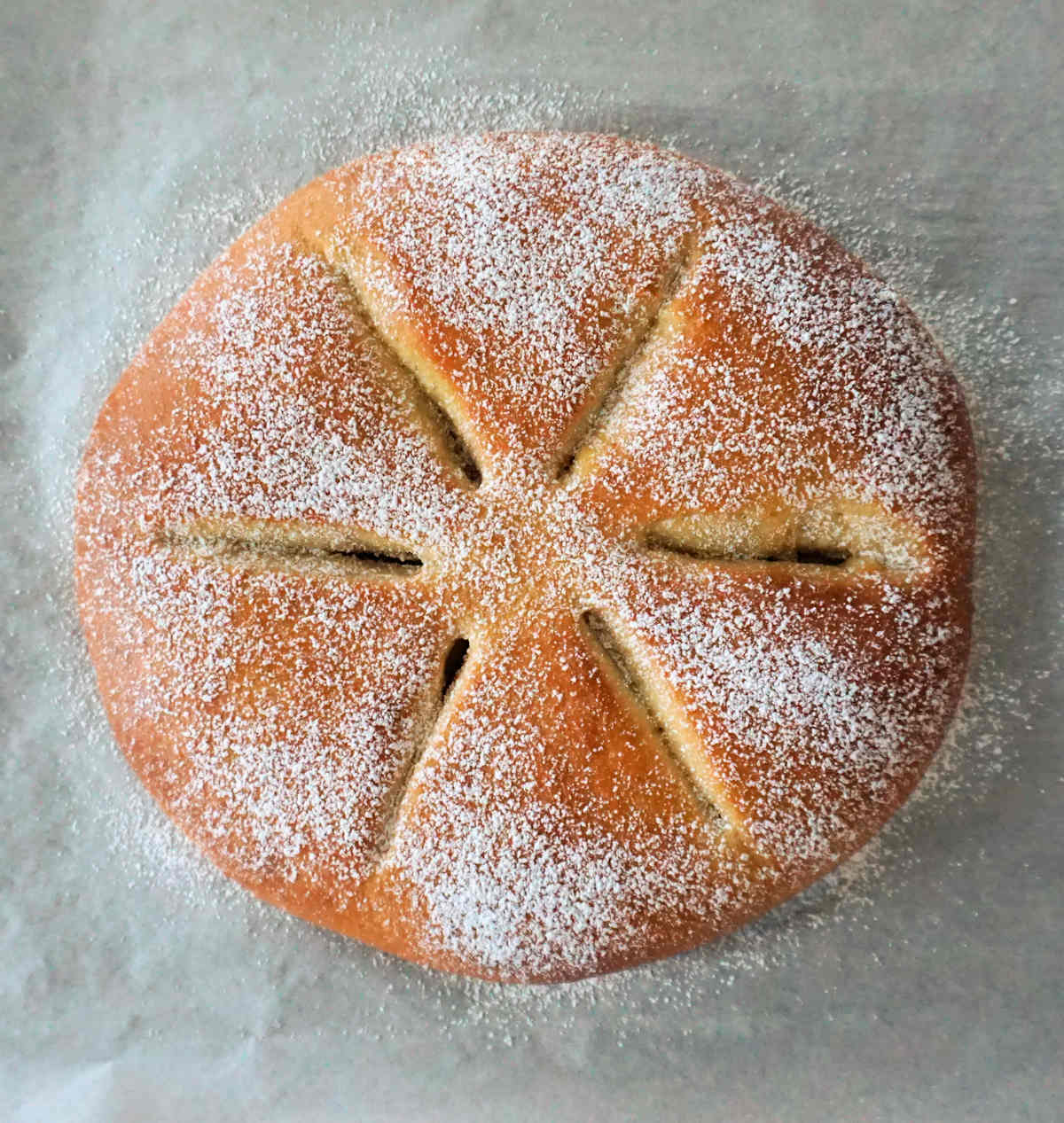Would you eat a dessert called ‘oil pump’? The name belies the taste of this wonderful, orange flavoured sweet Provençal Christmas bread.

There is a lovely Christmas tradition in Provence: to serve thirteen desserts on Christmas Eve, symbolic of the twelve apostles and Jesus.
What’s French Christmas like?
As in many other European, traditionally Catholic countries, the main celebrations in France take place on the 24th of December.
There is a lavish dinner, with oysters, caviar, foie gras and whatever is the best of the best in a particular household, no expenses spared. Birds are roasted, pintade (guinea fowl) or pheasant, and all is washed down with champagne.
The feast called Le Reveillon traditionally should commence after the midnight mass and go on into the small hours of Christmas morning, but practical and less orthodox households have their repast at a more sensible hour of the evening.
Thirteen desserts of Christmas
But of all the French regions, Provence beats the others on the number of desserts: thirteen of them, instead of one meagre bûche de Noël in Lombardy, Gascoigne and Ile de France.
Admittedly, among the thirteen there are ready-made things: dried fruit, nuts, dates and raisins but they get an elevated status by being associated with various monk orders. There are walnuts for the Augustines, almonds for the Carmelites, raisins for the Dominicans and figs for the Franciscans. Dates are sacred and symbolise the seed of life.
There is fresh fruit in its plenty too: melons, apples and pears, figs and oranges. And amongst the baked or confected sweets, the nougats, the bûche de Noël and the calissons, there is a wheel or two of pompe à l’huile, sweet Christmas Provençal bread, orange flavoured and enriched with olive oil.
What is pompe a l’huile?
Traditionally two wheel-shaped loaves are baked: one to consume on Christmas Eve, at Le Reveillon feast, and the other not many hours later, for Christmas Day breakfast.
It makes perfect sense to bake olive oil bread in the olive country, and the name is a clever description of how in the olive oil mills of Provence, at the end of the process, they used wheat flour to ‘pump’ or soak up the residual oil.
Oil pump is flavoured with orange zest and orange blossom water which is not to everyone’s taste as it does have a strong floral perfume. The dough is shaped into a wheel and scored with a knife or pastry cutter, so that the bread can be broken by hand and never needs to be cut.
How to make pompe à l’huile?
There is nothing difficult about it and it’s lovely dough to work with (my recipe follows largely the one on Breadtopia).
The only unusual thing is the long proving time: it takes up to four hours for the dough in bulk to achieve the double volume stage, and almost two hours for the shaped wheels to puff up.
It’s all because of the richness, sumptuousness and all those qualities of the dough that make it so delicious in the finished product.
What does it taste like?
Pompe à l’huile is distinctly different from buttery breads. It is very soft but not particularly fluffy. The same way as it works in cakes, those baked with oil are much moister than butter-based ones. So is pompe – solid and filling, a little stodgy in the nicest way.
But thanks to that oil it keeps exceedingly well, even though it’s meant to last only two days. It also reheats wonderfully: five minutes in a warm oven or even a few seconds in the microwave brings the texture back to the freshly baked quality.
You would not think to put butter on bread so rich in olive oil, but it is indulgently delicious. I also think a drizzle of good honey is not amiss on a wedge of the pompe for a festive breakfast.
More French bread recipes
Pompe à l’huile is about oil, and brioche is about butter, of course. Here’s my personal favourite brioche recipe, suited to make one large loaf as well as several mini brioches.
In parts of Provence pompe à l’huile is called fougasse, but a festive version of it. Here’s everyday fougasse au Emmental, the savoury bread.
We can’t have ‘French bread’ heading without croissants, although it’s debatable whether they actually are ‘bread’ and not in a league completely of their own.
More Christmas dessert recipes
Continuing the French theme, here’s the famed bûche de Noël recipe, firmly demanded every year in my house.
For New Year and Epiphany, the French bake galette des rois: delicate puff pastry with gorgeous frangipane filling.
Raspberry meringue roulade with fresh cream is a stylish finale to a Christmas dinner not only in France, and it’s not that hard to make!